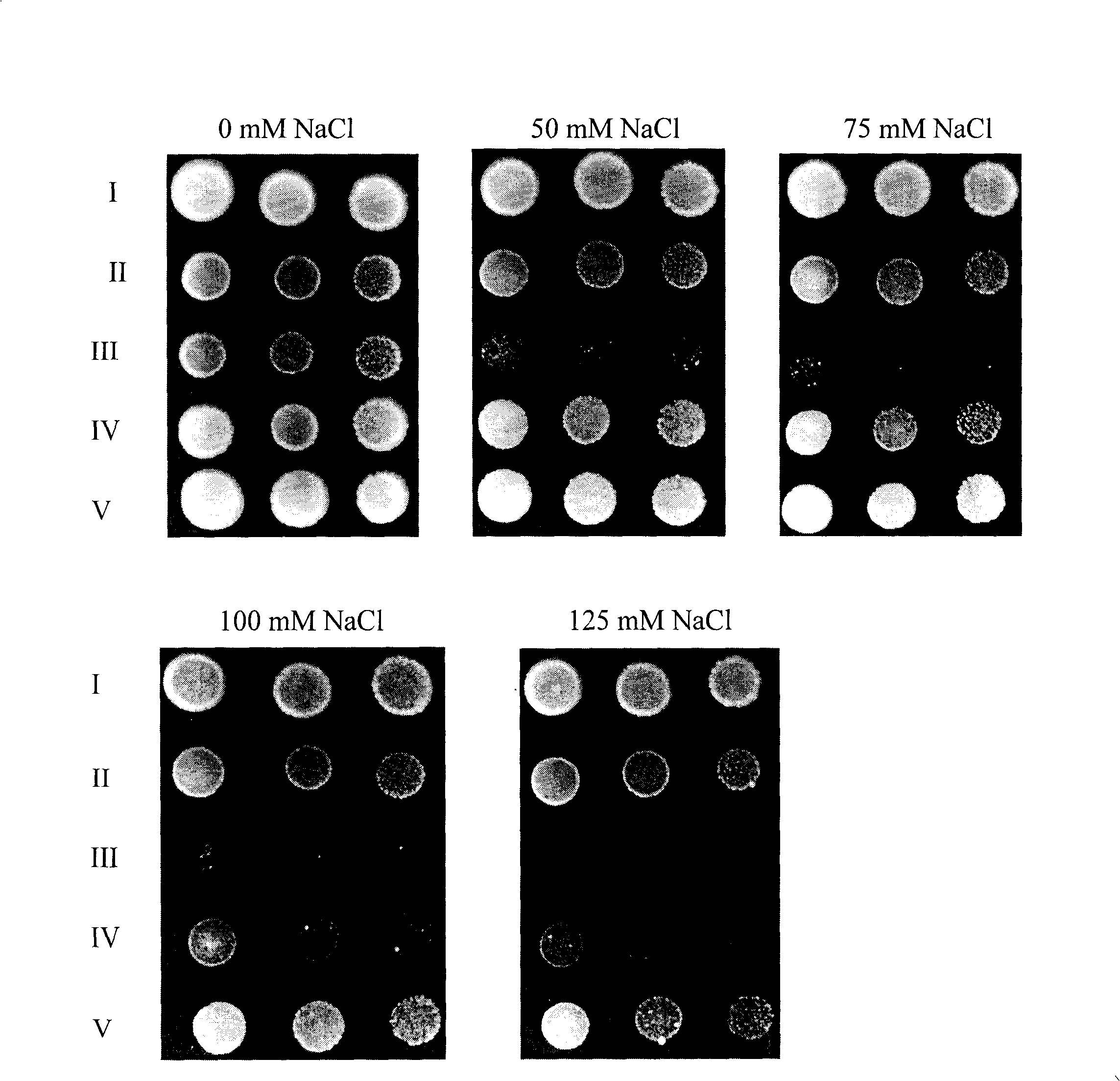Plant strong salt-resistant gene AtNHXS1 and its coding protein and application
A salt-tolerant gene and plant technology, applied in the field of plant genetic engineering, can solve unreported problems and achieve the effect of improving salt resistance
- Summary
- Abstract
- Description
- Claims
- Application Information
AI Technical Summary
Problems solved by technology
Method used
Image
Examples
Embodiment 1
[0030] Example 1. Arabidopsis Na + / H + Cloning of the antiporter gene
[0031] Arabidopsis thaliana total RNA was extracted from the young leaves of Arabidopsis thaliana with TRizol reagent, and the total RNA was used as a template for reverse transcription to synthesize the first strand of cDNA. Using the synthesized cDNA as a template and referring to the cDNA sequence of AtNHX1, the following two primers were designed (the 5' end contains SmaI and SalI restriction sites respectively):
[0032] AtR(5'-GC GTC GAC TCAAGCCTTACTAAGATCAGGAGG-3')
[0033] AtF(5'-TCC CCCGGG ATGTTGGA TTCTCTAGTG-3')
[0034] Arabidopsis Na + / H + The antiporter gene AtNHX1 was connected to the pGM-T vector and transformed into Escherichia coli DH5a, and the sequence of the cloned AtNHX1 was confirmed by sequencing.
Embodiment 2
[0035] Example 2. DNA shuffling of the AtNHX1 gene
[0036] 1) Preparation of starting materials Using pGM-T-AtNHX1 as a template, AtNHX1 was amplified by PCR with Taq DNA polymerase, purified and used as starting materials for DNA shuffling.
[0037] 2) Random enzyme digestion with DNase I Take 10 μg of purified AtNHX1 and add it to 50 μl enzyme digestion reaction system (10 mM Tris-HCl, pH7.4, 50 mM MnCl 2 ), react at 15°C for 10 min. Add DNase I0.15U, mix well, 15°C, 2min, 90°C, 10min. The product goes through 2.5% agarose gel electrophoresis, and the gel containing 100-200bp fragments is excised and recovered.
[0038] 3) PCR without primers Take 1 μg of recovered small fragments and add to 50 μl reaction system (10×Pfubuffer, 0.2 mM each dNTP, 0.6 U / μl Pfu polymerase). The PCR program was reaction conditions: pre-denaturation at 94°C for 60s, denaturation at 94°C for 30s, annealing at 50°C for 30s, extension at 72°C for 30s, a total of 40 cycles, and finally extension a...
Embodiment 3
[0041] Example 3. Construction of expression shuffling library and resistance to high salt Na + / H + Screening for antiporter genes
[0042] The recombinant product obtained in Example 2 was digested with Sal I and Sma I, purified and connected to the same digested yeast expression vector pYPGE15, and the constructed expression shuffling library was introduced into the yeast mutant strain W303-1BΔena1- 4::HIS3Δnhx1::TRP1, spread on the APG selection medium containing 100mM NaCl (without uracil), culture at 30°C for 2 days, and carry out high-salt Na + / H + High-throughput screening of antiporter genes. Finally, a normal-growing yeast mutant containing a new plant strong salt-tolerant gene AtNHXS1 was obtained.
PUM
 Login to View More
Login to View More Abstract
Description
Claims
Application Information
 Login to View More
Login to View More - R&D
- Intellectual Property
- Life Sciences
- Materials
- Tech Scout
- Unparalleled Data Quality
- Higher Quality Content
- 60% Fewer Hallucinations
Browse by: Latest US Patents, China's latest patents, Technical Efficacy Thesaurus, Application Domain, Technology Topic, Popular Technical Reports.
© 2025 PatSnap. All rights reserved.Legal|Privacy policy|Modern Slavery Act Transparency Statement|Sitemap|About US| Contact US: help@patsnap.com

